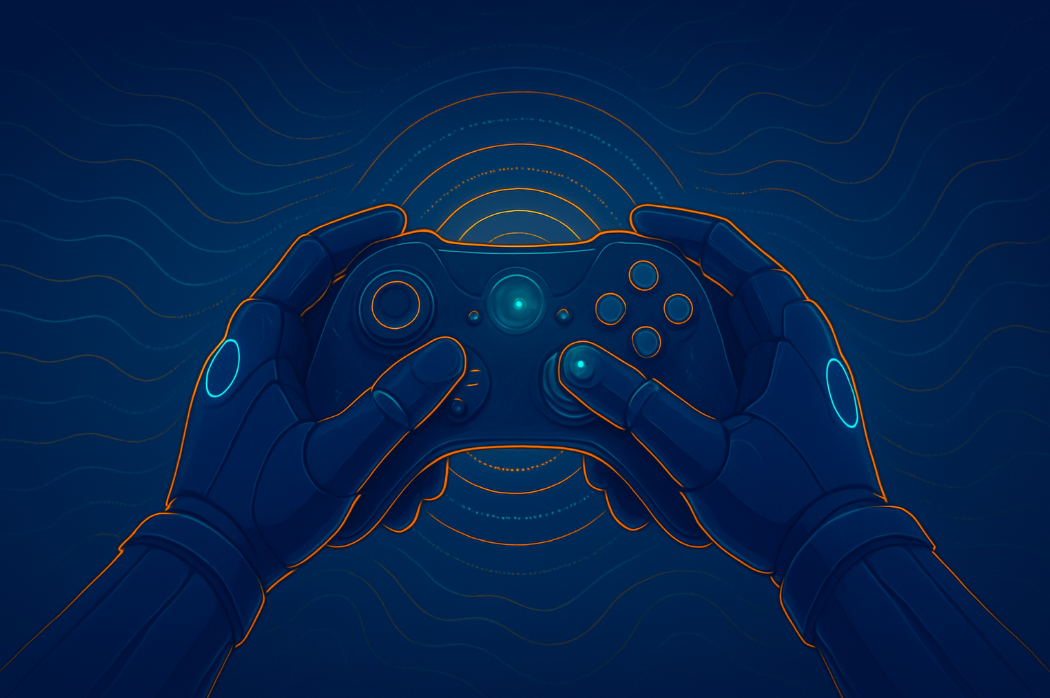
In the quest for deeper immersion, game developers are turning to tactile technologies that go beyond visuals and sound. Enter the WYVRN SDK — an all-in-one Razer technologies solution that lets developers easily integrate haptics response, RGB lightning, and spatial audio effects, all using a single, unified SDK. n this overview, we’ll spotlight Razer Sensa HD Haptics — a cutting-edge feature of Razer’s WYVRN ecosystem that brings physical sensation to virtual experiences. From the crunch of gravel underfoot to the pulse of a nearby explosion, Razer Sensa HD Haptics lets players feel the game like never before.
One SDK to Rule Them All
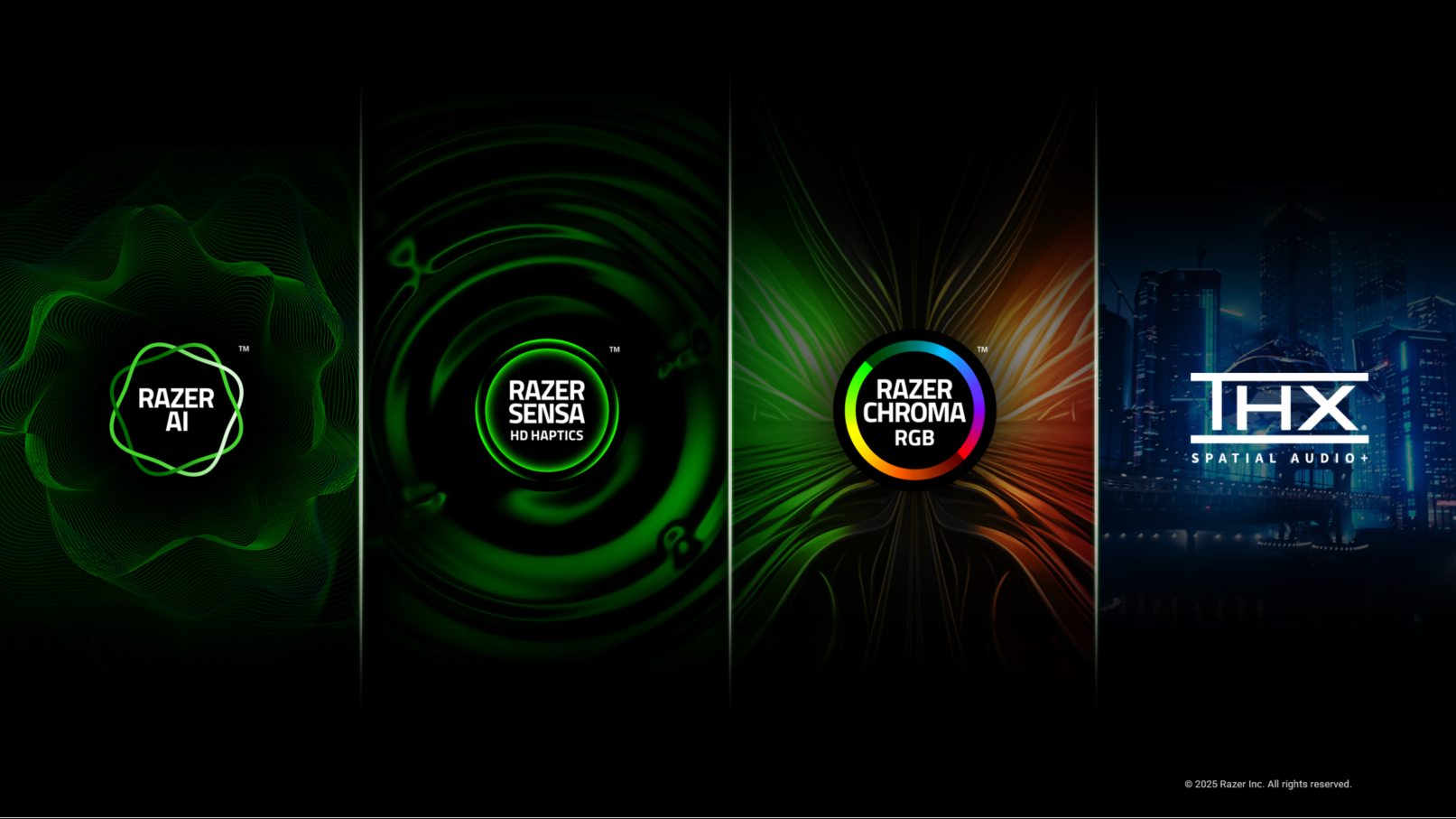
The WYVRN SDK is the all-in-one SDK for all Razer technologies: AI Gaming Tools, Razer Chroma RGB, and Razer Sensa HD Haptics. The WYVRN SDK integration process happens in collaboration with the Razer/WYVRN Team, who designs the Razer Chroma RGB animations, haptic effects, and provides the AI integration. Unlike the Razer Chroma RGB SDK and Interhaptics SDK which can be used independently (without WYVRN team involvement), the WYVRN SDK integration requires working directly with the WYVRN team as everything is hosted on the Razer Synapse 4 side. Game developers don’t need to design their own haptic effects or Razer Chroma RGB animations when using the WYVRN SDK – this is handled by the WYVRN team.
WYVRN SDK offers:
• Razer Chroma RGB integration
• Razer Sensa HD Haptics integration
• AI integration
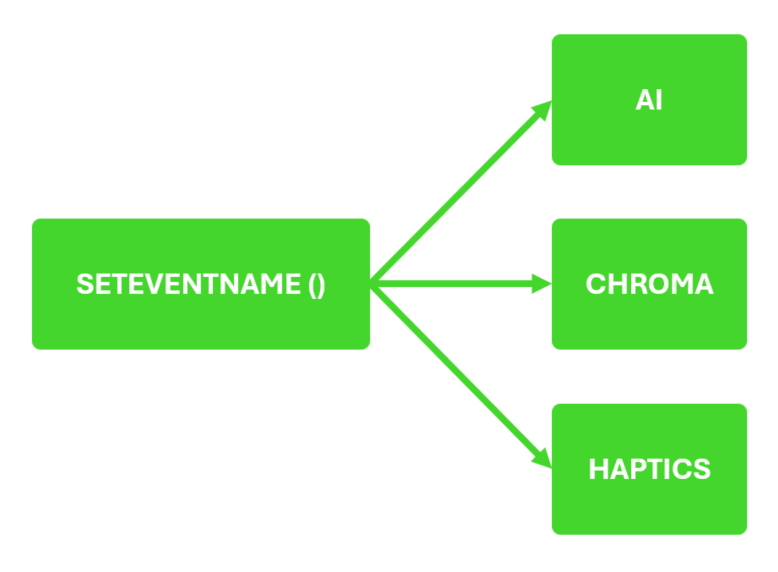
The WYVRN SDK can play Razer Chroma RGB animations and haptics on the Razer Sensa HD Haptics devices. SetEventName() can trigger AI interaction, RGB lighting, or haptics or all of the above.
What Is Razer Sensa HD Haptics?
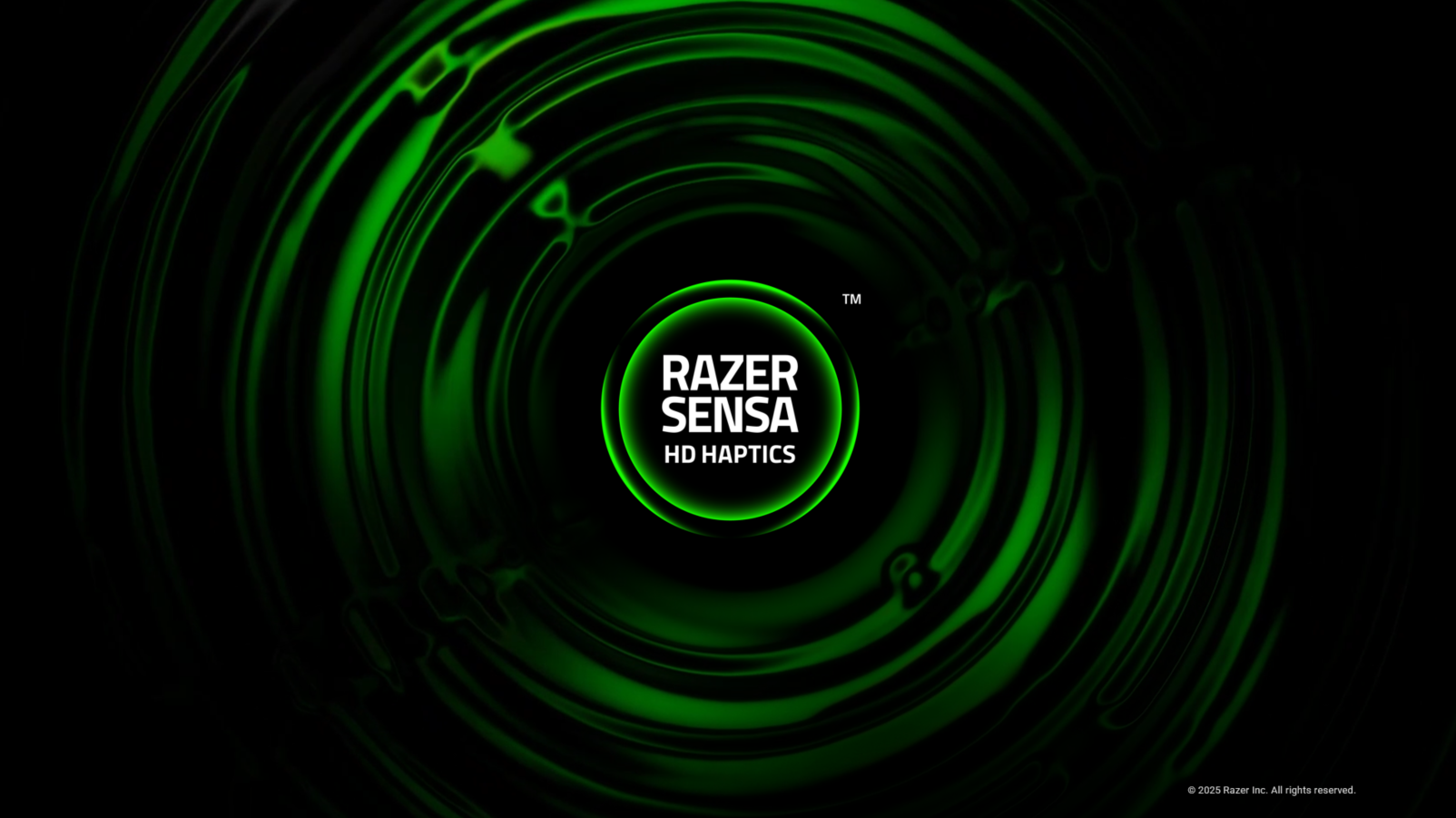
Razer Sensa HD Haptics is a high-definition tactile feedback platform that delivers nuanced vibrations and sensations. Unlike traditional rumble motors, Razer Sensa HD Haptics compatible devices use advanced actuators to simulate directional impacts, environmental cues providing spatialized haptics with remarkable fidelity. This increases notably the immersive experience of gaming, allowing players to physically feel impacts, hits, and even form a deeper emotional connection with the character.
Unlike traditional workflows where haptics had to be integrated during core stages of game development, the WYVRN SDK streamlines the process. Studios simply tag in-game event messages — and the Razer Sensa HD Haptics platform takes care of the rest.
Haptic effects are designed externally, outside the game engine, allowing game developers to focus on gameplay quality while haptic designers independently craft high-fidelity tactile experiences. This separation of concerns eliminates the need for constant back-and-forth communication.
The WYVRN SDK offers more than just haptic integration — it’s a comprehensive platform that brings together Razer Sensa HD Haptics, Razer Chroma RGB lighting, THX spatial audio, and AI-driven enhancements. Together, these technologies deliver unprecedented precision, immersion, and creative freedom for developers.
This unified vision puts WYVRN at the forefront of innovation, redefining the future of game development and driving the gaming market to a new level.
The vision of WYVRN is collaboration — everyone on the same boat. The system isn’t exclusively limited to Razer devices: both Razer Chroma RGB and Razer Sensa HD Haptics allow third parties into the ecosystem. Through official partnerships, external manufacturers can integrate their devices with WYVRN’s lighting and haptics frameworks, expanding the reach of the technology across the market. This approach not only increases hardware compatibility but also adds fun for the final user’s overall gaming experience.
By relying on a unified and powerful SDK, developers can shift their focus from complex technical integrations to game design and creativity. The WYVRN SDK removes the need to juggle multiple toolchains, streamlining the entire development process. All is handled by the Razer Synapse 4 and the Chroma App, which are necessary dependencies for the whole ecosystem to work properly, allowing the best immersive experience possible.
From Theory to Practice: How to Integrate Razer Sensa HD Haptics
Integrating Game Events
Integration of game events is the only action required on the game side. The choice of game events marks the entry point for WYVRN SDK integration. The implementation begins by selecting in-game events that should trigger immersive effects — with recommendations categorized by priority: high, medium, or low. Choosing when to trigger haptic feedback is indeed crucial for creating an optimal player experience. Well-timed interactions enhance realism, emotional impact, and overall immersion.
Game events can be of different kinds, spanning from game state, player state or action, to environmental state and more. It is possible to trigger events at different stages of an action, such as when it begins or when it completes. It is important to note that, by default, one event is fired per action. However, developers may ask for additional events to expand the gameplay or even remove events that may no longer be relevant.
When defining in-game events, it is important to start with a minimal set and add events later rather than the other way around. Begin with key moments — such as combat or environmental transitions. Maintaining balance is essential. Overloading the player with constant haptic cues can lead to sensory fatigue, reducing the effectiveness of each effect and ultimately harming immersion. When feedback is always present, it risks becoming background noise — dulling emotional response and diminishing player engagement.
Well-timed haptics, on the other hand, elevate emotional moments and reinforce the connection between player and game. In haptics design, less is more.
The game event design and the possible revisions ensure alignment between the game developers and the haptic (and chroma) designers.
To integrate game events, developers simply insert calls to SetEventName() with unique string identifiers corresponding to each event. This process is lightweight and typically takes no more than five days for a single developer. The event can trigger haptic effects, chroma effect or both, depending on the type of game and the designer intentions.
Designing Haptic Effects
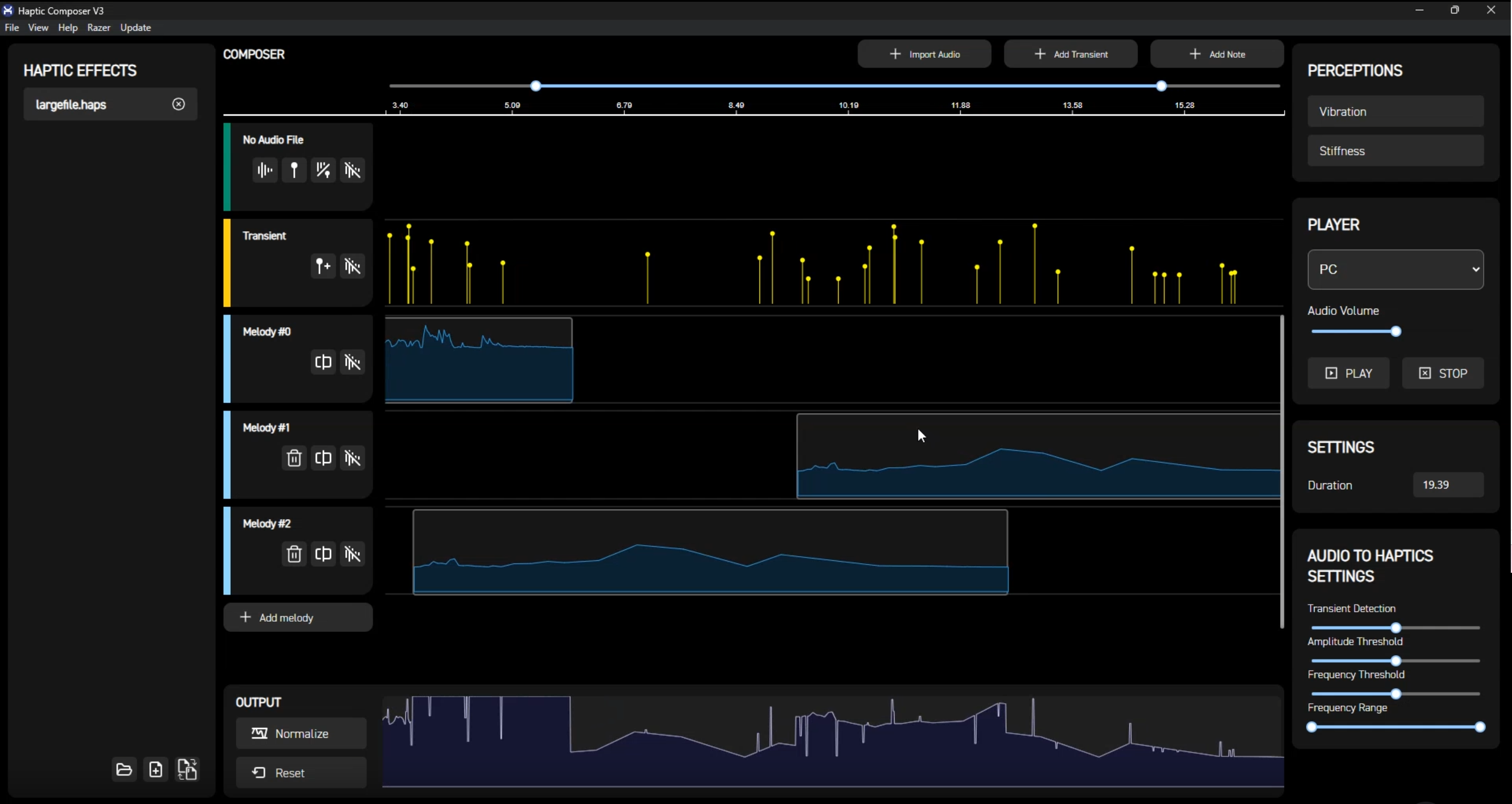
As previously mentioned, haptic effects are designed externally, independent of the game environment. This means haptics can be added without modifying the game’s code — and even after the game has been released. Designers can use the Haptic Composer to:
• Create custom vibration profiles
• Preview effects and test in real-time with any Razer Sensa HD Haptics platform-compatible device
The in-game testing parts are typically provided using Betakeys and, when applicable, console commands which are restricted to the QA review team. This setup allows testers to easily navigate the build and trigger specific events at the right moments, ensuring that haptic and visual effects behave correctly.
Designer intentions and underlying game animations drive the design of in-game haptic effects.
To illustrate this, lets take a look at the haptic design workflow and designer’s intentions for Iron Man in Marvel Rivals.
Example: Iron man - Unibeam
For the Unibeam attack, the intention was to convey a powerful energy surging from Iron Man’s chest, in sync with the animation. The haptic design aimed to replicate the laser effect with precision, emphasizing its intensity.
To achieve this, four different notes with similar amplitude but varying frequencies are looped. This creates the impression of a continuous effect, while the frequency variations add dynamism.
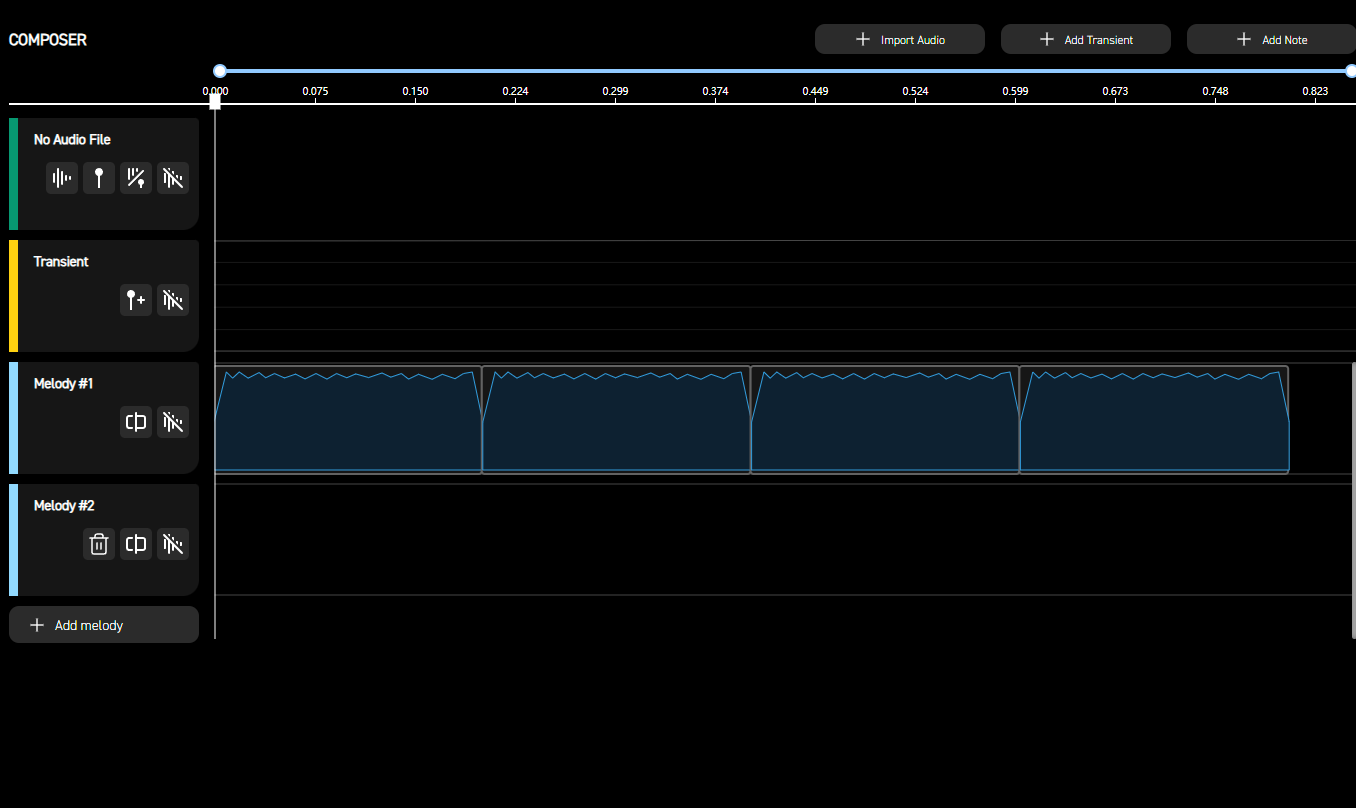
For an in-deep hands-on look at the haptic design behind Marvel Rivals, we recommend reading Immersion Redefined: The Tech Behind Marvel Rivals’ Sensory Revolution.
Linking Game Event to Haptic Effects
Now we have all the ingredients to enhance game experience with Razer Sensa HD Haptics platform and Razer Chroma RGB. What is missing? We need to create our configuration file, the WYVRN.config. This file contains all the necessary information about haptics, chroma and AI.
For haptics, WYVRN.config defines default targeting for the generated entries for each detected command. Any WYVRN game event will be associated with one or more haptic effects depending on the design intent, spatialization, haptic intensity and other parameters.
To activate it, put the game’s folder containing all the haptic effects and the WYVRN.config file inside
C:\Program Files (x86)\Interhaptics\hapticFolders \GameName.
Once the game is launched, the platform will automatically detect the configuration and load the corresponding data. The haptic engine embedded in the platform will take care of rendering each haptic effect (and chroma lighting, if defined) on the appropriate body parts (target).
Note: Haptic configuration files are automatically distributed by the team through Chroma App updates.
Testing
With everything in place, the final step is testing — the fine-tuning phase of the process. Here, the designer plays through the game and adjusts any haptic effects that feel off, out of sync, or overwhelming.
To simply the testing phase, game studios provide ad-hoc build of the game (yes, we use cheat codes here) so that the designer can jump directly to specific game moments without needing to progress through levels or win fights, saving valuable time.
Razer Sensa HD Haptics is more than a gimmick—i it’s a powerful tool for creating richer, more inclusive gaming experiences. With WYVRN’s developer tools, integrating this technology is both accessible and rewarding.

Written by:
Detjon Brahimaj
Senior Software Engineer @ WYVRN
